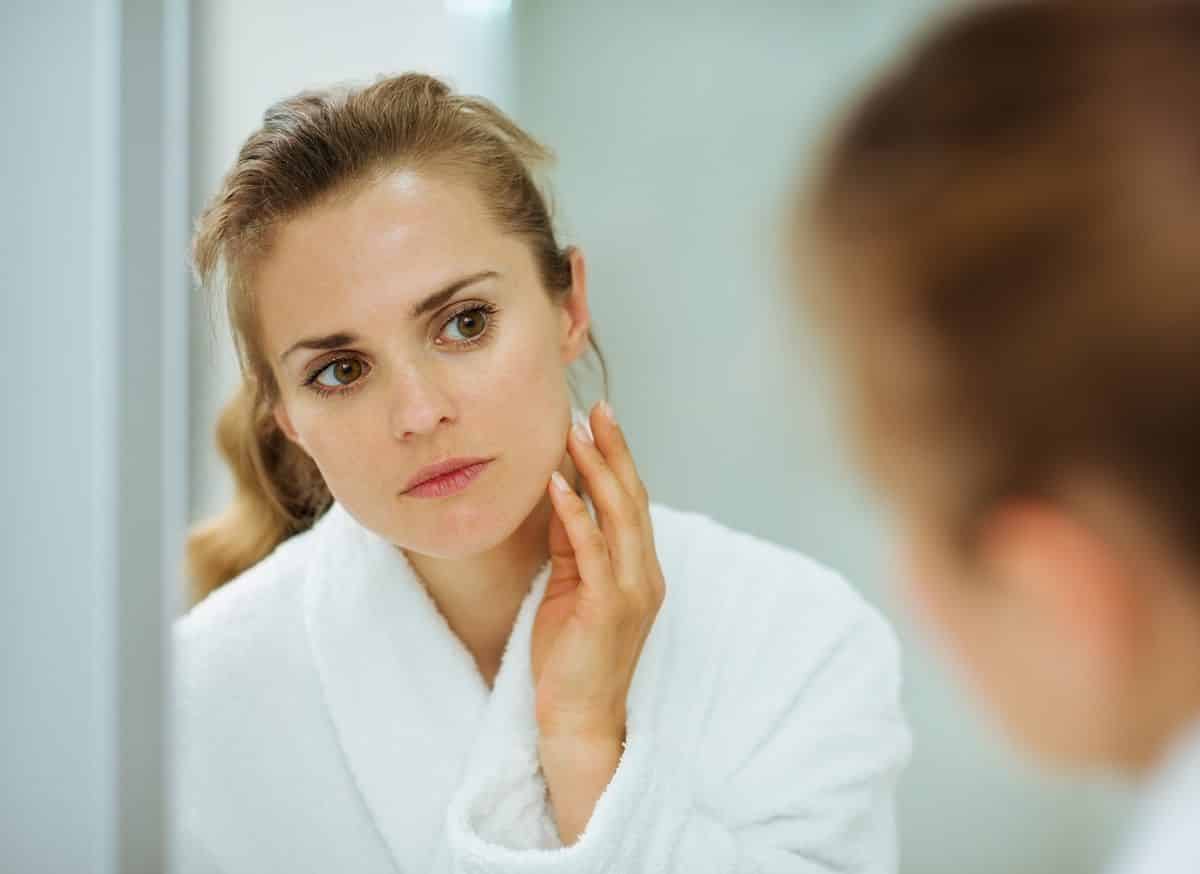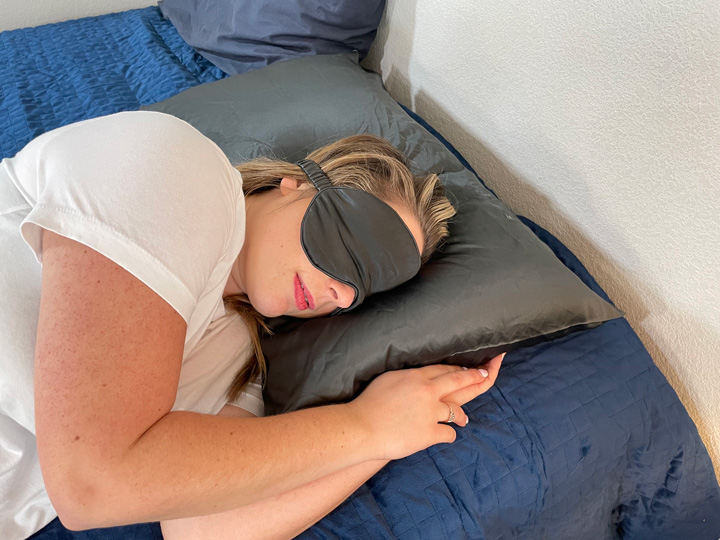You might have heard that silk pillowcases make your hair shinier and your skin smoother. But do they really work better than cotton pillowcases, and is it worth it to invest in one? We’re here to answer your questions!
Below, we’ll explain the benefits of silk pillowcases for your hair and skin, list some pros and cons of silk pillowcases, and even break down which type of silk pillowcase will work best for your needs. Keep reading to become an expert in the latest hair and skincare trend.
Silk Pillowcase Benefits for Skin
Silk pillowcases offer anti-aging and hydration benefits for your skin. Silk fibers are also naturally hypoallergenic and resistant to mold and dust mites. A lot of silk pillowcases are also organic! So, if you have sensitive skin, silk is a no-brainer. Below, we break down the hydrating and wrinkle-prevention features of silk pillowcases.
Hydrating
Silk does not absorb moisture from the skin the way cotton or polyester do. A high-quality silk pillowcase won’t leech natural oils from your skin, helping you stay extra hydrated year-round. Silk is a cooling fabric, so it’s often used in the summer months. But a good silk pillowcase can actually prevent dry skin in the winter.
Helps Prevent Wrinkles
Silk’s smooth surface can also help prevent wrinkles. According to dermatologists, tossing and turning on our pillows at night can create friction on our faces and lead to wrinkles. Side sleepers are particularly prone to pillow-induced wrinkles and creases. A silk pillowcase’s smooth surface creates less friction on your face, which can help prevent fine lines.

Silk Pillowcase Benefits for Hair
Silk pillowcases can also reduce frizz and hair breakage. Learn more below.
Prevents Frizzy Hair
Cotton and other materials can catch and tangle hair. Slippery silk allows your hair to glide across its surface, preventing tangles and frizz. Silk can help you wake up without bedhead, regardless of your hair type. But people with curly hair usually benefit most from silk pillowcases. In fact, hairstylists often recommend silk pillowcases to clients with curly hair.
Helps Maintain Moisture
Silk pillowcases won’t absorb moisture from your hair or absorb overnight hair masks like cotton pillowcases. So if you struggle with dry hair, a silk pillowcase can help keep it hydrated. This can reduce split ends and breakage.
But, while silk pillowcases can prevent some breakage, they won’t entirely stop you from getting split ends. We recommend adding collagen shampoos, deep conditioners, and regular trims to your hair care routine to reduce split ends. Collagen supplements and beauty products might also help reduce wrinkles.
Who Should Get a Silk Pillowcase?
So, who should get a silk pillowcase? We recommend them for:
- Hot sleepers looking for a cooling pillowcase.
- People with dry skin or hair looking for a pillowcase that leeches less moisture and product out of their hair.
- Sleepers hoping to reduce wrinkles.
- People who want to reduce frizz and wake up without bedhead.
- Anyone with curly hair hoping to reduce tangles and breakage.
What are the Pros and Cons of Silk Pillowcases?
There are pros and cons to getting your beauty sleep on silk. We’ve broken down a few of the major benefits and drawbacks of silk below.
|
Silk Pillowcase Pros |
Silk Pillowcase Cons |
| Silk offers many beauty benefits, including hair frizz reduction, skin and hair hydration, and wrinkle prevention. | Silk pillowcases can be expensive, especially if you’re looking for real silk. |
| Silk is naturally hypoallergenic and great for sleepers with sensitive skin. | Some silk may require hand washing. Other silks can be machine-washed, but you’ll want to use a delicate setting to avoid snags or tears. |
| Silk is naturally cooling, making it one of the best textiles available for hot sleepers. | Silk is not as absorbent as cotton, so you might notice hair or skincare products left behind on your pillow. While you should wash your pillowcase at least once a week to prevent breakouts, we know not everyone sticks to this schedule! But with a silk pillowcase, you’ll notice if you’ve left your sheets on the bed a little longer than you should have. |
Not so sure about silk anymore? Check out the best sheets of 2025 to learn about some other fabric options.
Best Types of Silk Pillowcases
There are many different kinds of silk available. Whether you’re looking for the highest quality silk or a budget-friendly pick, we’ve got some options for you. Take a look below to learn about the best silk pillowcase fabrics.
Mulberry Silk
Pure mulberry silk is extremely luxurious. It feels buttery soft and is made from the cocoon of Bombyx mori moths. Mulberry silk is smoother and stronger than all other silks. Mulberry silk also dries more quickly than other types of silk, making mulberry silk pillowcases very popular.

Eri Silk
Eri silk is made from domesticated silkworms. Like other silks, it is soft, durable, and naturally cooling. It is a staple, rather than long staple fiber, which means it is a little heavier and more absorbent than other silks. While Eri silk is cool in the summer, it also feels warm in the winter. This silk is made in the northeast states of India and has the smallest carbon footprint in the textile industry. So eco-conscious shoppers might prefer Eri silk.
Tasar Silk
Tasar silk is more porous than other types of silk. This makes it incredibly cooling. In fact, it is the most cooling type of silk available, so hot sleepers should enjoy it. Tasar silk is also less absorbent than other silks, so people with very dry skin or hair might prefer it.
Muga Silk
Like linen, Muga silk becomes more lustrous as it ages. This makes it a great investment for folks looking for a long-lasting new pillowcase. It is the most durable type of silk available. Muga silk also has a natural gold sheen and was previously used only by royalty!
Silk vs Satin Pillowcases
Silk pillowcases are made of silk fibers, which is why they are shiny and lustrous. Satin pillowcases can actually be made from a variety of different fabrics! It is the weave of satin that makes it look shiny and smooth.
Satin pillowcases will offer the same hair and skin benefits as silk pillowcases. They are also more affordable than silk and hold up better in the washing machine. But, unlike satin, silk is hypoallergenic, longer lasting, and much more breathable.
FAQs
For more info, read on!
Do silk pillowcases make you sleep better?
It depends on what makes you comfortable! Silk pillowcases might help you feel cooler at night, and may help prevent frizzy hair and wrinkles. If that sounds good to you, you might prefer sleeping on silk.
Do the amino acids in silk pillowcases help skin and hair?
Silk contains 18 amino acids, which might transfer to your skin and hair to help keep it hydrated. But the true benefits of a silk pillowcase come from its slippery smooth surface, which reduces friction on your skin and hair.
Do silk pillowcases help with acne?
Silk pillowcases absorb less moisture and are naturally hypoallergenic. So, some people with acne might find them helpful. But silk pillowcases are not a real fix for breakouts.
Do silk pillowcases help with wrinkles?
Silk pillowcases reduce friction on your face at night, which can help prevent wrinkles and fine lines.
Are satin pillowcases as good as silk?
It depends on what you are looking for. Satin offers similar hair and skin benefits and is more affordable than silk. But silk is more cooling and durable than satin. Silk is also hypoallergenic and made of natural, rather than synthetic, fibers.

